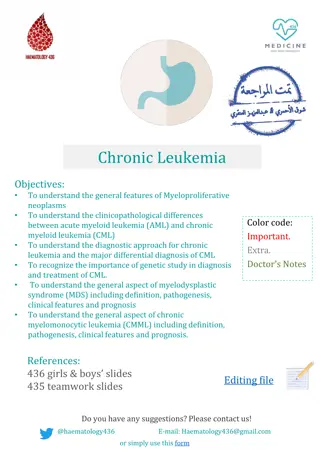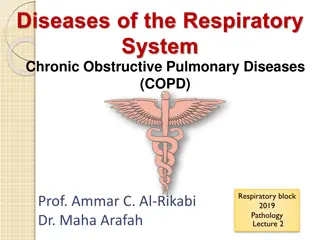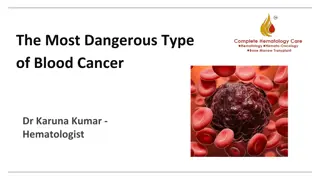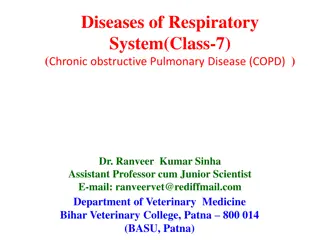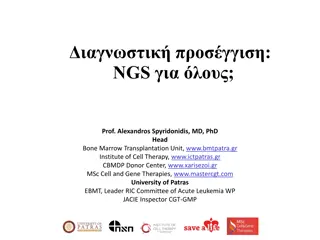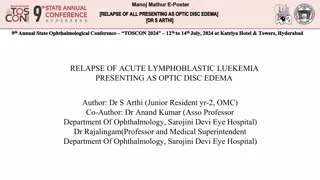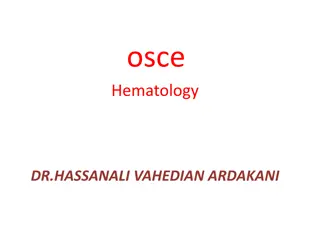Chronic Myeloid Leukemia
Chronic myeloid leukemia (CML), or chronic myelogenous leukemia, is a slow-growing form of cancer that affects the bone marrow and blood. Like acute myeloid leukemia, CML originates in the myeloid cells. When functioning properly, myeloid cells produce mature red blood cells, platelets and non-lymphocytic white blood cells. When healthy myeloid cells undergo cancerous changes and transform into leukemia cells, they are no longer regulated by normal growth patterns. Instead, they can rapidly produce abnormal copies of themselves, which can leave the bone marrow, enter the bloodstream and spread
Download Presentation

Please find below an Image/Link to download the presentation.
The content on the website is provided AS IS for your information and personal use only. It may not be sold, licensed, or shared on other websites without obtaining consent from the author.If you encounter any issues during the download, it is possible that the publisher has removed the file from their server.
You are allowed to download the files provided on this website for personal or commercial use, subject to the condition that they are used lawfully. All files are the property of their respective owners.
The content on the website is provided AS IS for your information and personal use only. It may not be sold, licensed, or shared on other websites without obtaining consent from the author.
E N D
Presentation Transcript
DR PAWAN KUMAR SINGH Dr Pawan Kumar Singh has the experience of performing more than 500 bone marrow transplants (including Autologous /Allogenic /Haplo /MDU )for both malignant and non-malignant disorders.
CHRONIC MYELOID LEUKEMIA Chronic Myeloid Leukemia (CML) is a type of cancer that affects the blood and bone marrow. It is a form of leukaemia characterized by the uncontrolled growth of myeloid cells, which are responsible for producing red blood cells, platelets, and white blood cells. This content aims to provide a comprehensive overview of CML, including its causes, symptoms, diagnosis, and treatment options
CAUSES & SYMPTOMS CML is often associated with a genetic abnormality known as the Philadelphia chromosome. This chromosome results from a translocation between chromosomes 9 and 22, leading to the formation of a fusion gene called BCR-ABL. The presence of this gene is a hallmark of CML and plays a crucial role in the development of the disease. SYMPTOMS The symptoms of CML can vary from person to person, and some individuals may not exhibit any symptoms during the early stages. Common symptoms include fatigue, weakness, weight loss, night sweats, and an enlarged spleen or liver. As the disease progresses, CML may lead to an increased risk of infections, easy bruising or bleeding, and bone pain.
DIAGNOSIS & STAGING CML is generally classified into three phases: chronic phase, accelerated phase, and blast phase. Most individuals are diagnosed in the chronic phase, which is characterized by the slow progression of the disease. If left untreated, CML may progress to the accelerated phase and eventually to the blast phase, which is more aggressive and resembles acute leukemia.
TREATMENT & PROGNOSIS With advancements in treatment, the prognosis for individuals with CML has significantly improved. Many patients can achieve long-term remission and lead normal, productive lives with proper medical management. Regular monitoring and follow-up with healthcare professionals are essential to ensure the effectiveness of the chosen treatment plan.
CONCLUSION Chronic Myeloid Leukemia is a complex and challenging disease, but advancements in medical research and treatment options have provided hope for those affected. Early diagnosis, combined with targeted therapies, has transformed CML into a manageable condition for many individuals. Ongoing research continues to enhance our understanding of the disease and improve treatment outcomes, offering optimism for the future.
Dr. Pawan Kumar Singh BLK-MAX SUPER SPECIALITY HOSPITAL, RAJENDRA PLACE NEW DELHI 09:00 AM - 05:00 PM MD-Medicine, DM (Haemato- Oncology AIIMS) BONE MARROW TRANSPLANT (BMT) SPECIALIST +91-9354700860/ 8750637212



